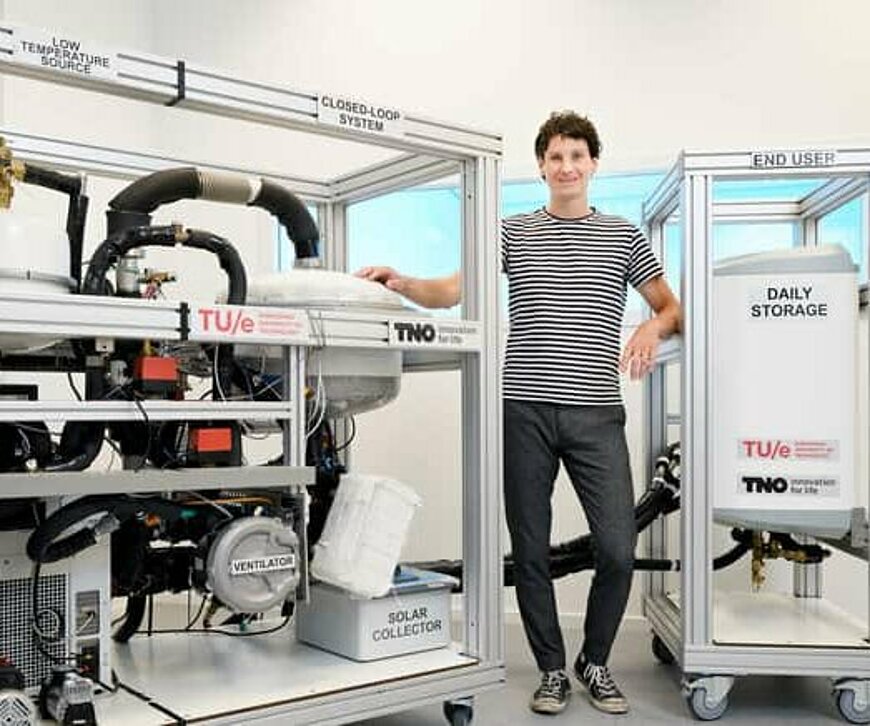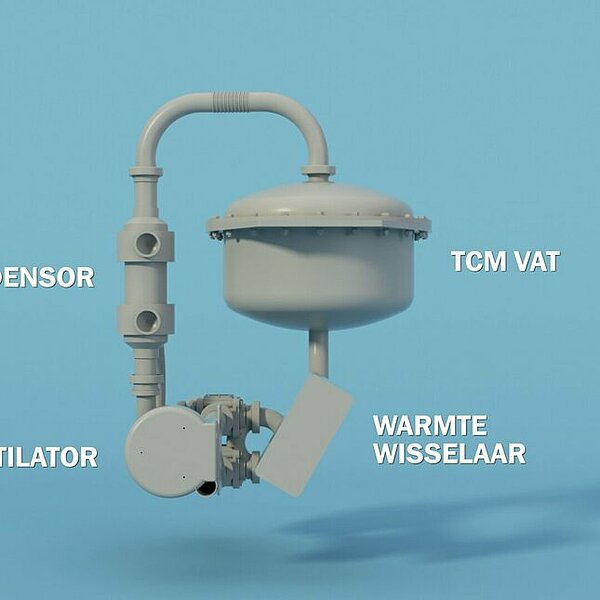This salt battery revolutionizes renewable energy storage

If it were up to mechanical engineer Jelle Houben, every household in the near future will have a device the size of a large refrigerator filled with salt tablets. The energy stored in this device can be used to heat our homes, and when the battery is empty, it can be recharged using renewable energy. An environmentally-friendly solution that can help create a natural gas-free built environment.
Mechanical engineer Jelle Houben and colleague Pim Donkers have developed a closed-loop system using salt tablets to store renewable energy. The new system, further developed by TU/e spin-off Cellcius, has been granted financial support from Bill Gates’ Climate Fund for research into their salt battery development. Adding certain additives known as ‘dopants’ can accelerate the response speed of the battery.
Ever since his graduation project, Houben has been working on finding ways to make the salt battery applicable. The new closed-loop system he developed with Donkers is currently being further developed by TU/e spin-off Cellcius. As part of his graduation research, Houben set up home temporarily at the Eindhoven department of Applied Physics to improve the chemical reaction in the salt battery. He recently defended his thesis.
The salt battery consists of four components linked in a closed system and works by having two separate components respond to one another: salt and water. When the water vapor is carried to the salt, the salt absorbs the water molecules in its crystal lattice. This hydration response creates water that can heat in a boiler. The other way around, heat can be stored via the reversed reaction during which water is released from the salt.
Colleagues of Houben found out earlier that to make a salt battery more stable and affordable and to improve its capacity for loss-free energy storage; the best option is to add calcium carbonate. Subsequently, Houben tested several techniques in the lab to improve the salt’s performance, which would increase the rate at which the battery can charge and discharge.Houben demonstrates that it is possible to accelerate the salt battery’s response speed by adding certain additives, also known as ‘dopants’ in the field. “Cesium carbonate is a very effective addition, but its disadvantage is that it’s a costly salt. That is why we tested a variety of organic salts, such as potassium acetate, which is widely available and not as expensive. The results are promising, we’ve managed to improve the battery stably at the powder level. However, we will use salt tablets in a solid form for the actual system, so we will need to do more follow-up research.”

Salt Battery Research and Development
In parallel with the continuing developments on a fundamental level, practical studies are now starting to take place. Houben’s employer – he has been working for TU/e spin-off Cellcius for over a year now – recently placed a salt battery in a residential home, in collaboration with Eindhoven housing corporation Trudo. These pilots are part of an EU project called Heat-Insyde.
The salt battery consists of four components that are linked in a closed system. Illustration: Jelle Houben.
The spin-off has been awarded financial support from Bill Gates’ Climate Fund for research into their salt battery development. This funding will help Cellcius create a larger-scale prototype of its existing system, which could potentially revolutionize renewable energy storage and help create a natural gas-free built environment.
Salt Battery Technology Explained
The rechargeable battery made using salt promises to last longer than conventional batteries while storing more power and offering an alternative solution for renewable energy storage. The technology works by storing energy as heat and releasing it when needed.
The process begins with converting electricity into heat that heats a liquid (in this case, oil or water). This liquid then passes through an evaporator containing salts which absorb water molecules from the liquid into their crystal lattice structure, increasing their volume and creating pressure on the liquid.
This pressure is then released when heat from an external source like solar power or wind turbines evaporates off some of the liquid from the salts causing them to shrink back down. This process repeats itself each time energy needs to be stored or released.
